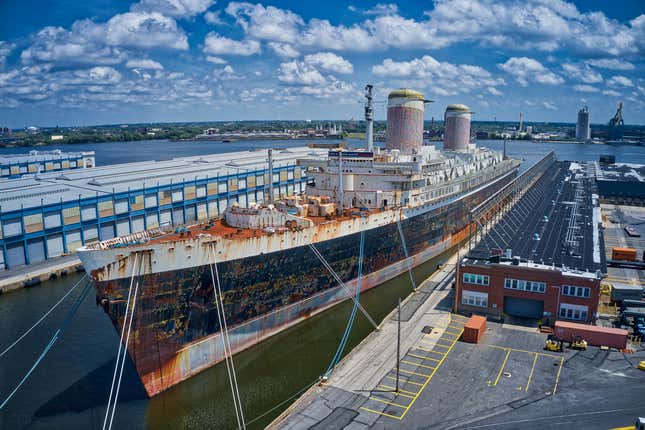The Last Fastest Ocean Liner Allegedly Owes $800,000 In Back Rent

Photo: Brian W. Schaller / Wikimedia Commons
The SS United States is facing eviction from its mooring at Pier 82 in Philadelphia in a lawsuit filed by Penn Warehousing, the pier’s landlord. The ocean liner has been rusting away in the Delaware River since 1996 but has a storied past. In 1952, it broke the once-highly sought record for the fastest transatlantic crossing, the last passenger ship to do so. The SS United States Conservancy, a non-profit attempting to restore the ship, admits that relocation will be necessary but is still aiming to preserve the vessel.
The Hyundai Ioniq 5 Is A Great EV For A Growing Family | WCSYB?
The potential eviction stems from rent increases that could be against the terms of Pier 82’s rental agreement. Warren Jones, a Conservancy board member, told NPR that Penn Warehousing claims that the SS United States owes up to $800,000 back rent. The Conservancy claims that the daily mooring cost has jumped from $850 to $1,700 over the past few years. Jones said, “The rental agreement that they wrote and presented to us had no provision in it for escalating the rent and it even had no time limit on the lease as well.”

Photo: FocusOnWildlife / Wikimedia Commons
The lawsuit, whatever the outcome, will likely mean the SS United States will have to be relocated. Despite being covered in rust, the ship is still structurally sound and can be towed elsewhere. Finding a destination is the difficult part. Being a half-century removed from the age of ocean liners, there aren’t many places to have a ship of that size parked indefinitely.
The SS United States took the Blue Riband off the Cunard’s RMS Queen Mary on its maiden voyage across the Atlantic in 1952. The ship ran regular passenger services until 1969, finally succumbing to the growth of commercial jet travel. The ocean liner’s status as an emergency U.S. Navy troopship during the Cold War kept the ship preserved and ready for wartime service until 1978.
The Conservancy’s dream is to relocate the SS United States to New York City, the former home of the ship’s in-period operator, United States Lines, as part of a multi-million dollar redevelopment plan. However, the non-profit organization is willing to donate the vessel to an appropriate government agency like the National Park Service. I just hope that the SS United States will be in a state suitable for people to explore a bygone age of travel in person.



